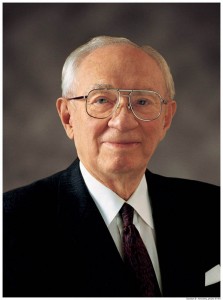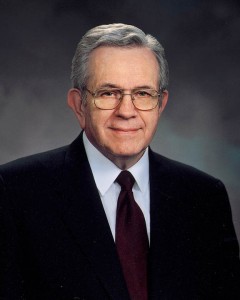The Book of Mormon is a book of scripture. It is another testament of Jesus Christ. It is written in biblical language, the language of the prophets.
For the most part, it is in easy-flowing New Testament language, with such words as spake forspoke, unto for to, with and it came to pass, with thus and thou and thine.
You will not read many pages into it until you catch the cadence of that language and the narrative will be easy to understand. As a matter of fact, most teenagers readily understand the narrative of the Book of Mormon.
Then, just as you settle in to move comfortably along, you will meet a barrier. The style of the language changes to Old Testament prophecy style. For, interspersed in the narrative, are chapters reciting the prophecies of the Old Testament prophet Isaiah. They loom as a barrier, like a roadblock or a checkpoint beyond which the casual reader, one with idle curiosity, generally will not go.
You, too, may be tempted to stop there, but do not do it! Do not stop reading! Move forward through those difficult-to-understand chapters of Old Testament prophecy, even if you understand very little of it. Move on, if all you do is skim and merely glean an impression here and there. Move on, if all you do is look at the words.
Soon you will emerge from those difficult chapters to the easier New Testament style which is characteristic of the rest of the Book of Mormon.
Because you are forewarned about that barrier, you will be able to surmount it and finish reading the book.
You will follow the prophecies of the coming of the Messiah through the generations of Nephite people to that day when those prophecies are fulfilled and the Lord appears to them.
You will be present, through eyewitness accounts, at the ministry of the Lord among the “other sheep” of whom he spoke in the New Testament. (See John 10:16.)
Thereafter, you will be able to understand the Bible as never before. You will come to understand much in the Old Testament and to know why we, as a people, hold it in such esteem. You will come to revere the New Testament, to know that it is true. The account of the birth and the life and the death of the man Jesus as recorded in the New Testament is true. He is the Christ, the Only Begotten Son of God, the Messiah, the Redeemer of mankind.
Boyd K. Packer, “‘The Things of My Soul’,” Ensign, May 1986, 59
—
 Gordon B. Hinckley
Gordon B. Hinckley
The third cornerstone is the Book of Mormon. It is real. It has weight and substance which can be physically measured. I open its pages and read, and it has language both beautiful and uplifting. The ancient record from which it was translated came out of the earth as a voice speaking from the dust. It came as the testimony of generations of men and women who lived their lives upon the earth, who struggled with adversity, who quarreled and fought, who at various times lived the divine law and prospered and at other times forsook their God and went down to destruction. It contains what has been described as the fifth Gospel, a moving testament of the New World concerning the visit of the resurrected Redeemer on the soil of this hemisphere.
The evidence for its truth, for its validity in a world that is prone to demand evidence, lies not in archaeology or anthropology, though these may be helpful to some. It lies not in word research or historical analysis, though these may be confirmatory. The evidence for its truth and validity lies within the covers of the book itself. The test of its truth lies in reading it. It is a book of God. Reasonable people may sincerely question its origin; but those who have read it prayerfully have come to know by a power beyond their natural senses that it is true, that it contains the word of God, that it outlines saving truths of the everlasting gospel, that it “came forth by the gift and power of God … to the convincing of the Jew and Gentile that Jesus is the Christ” (Book of Mormon title page).
It is here. It must be explained. It can be explained only as the translator himself explained its origin. Hand in hand with the Bible, whose companion volume it is, it stands as another witness to a doubting generation that Jesus is the Christ, the Son of the living God. It is an unassailable cornerstone of our faith.
Gordon B. Hinckley, “Four Cornerstones of Faith,” Ensign, Feb 2004, 2–7


Recent Comments